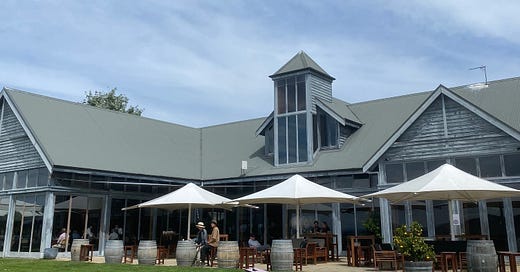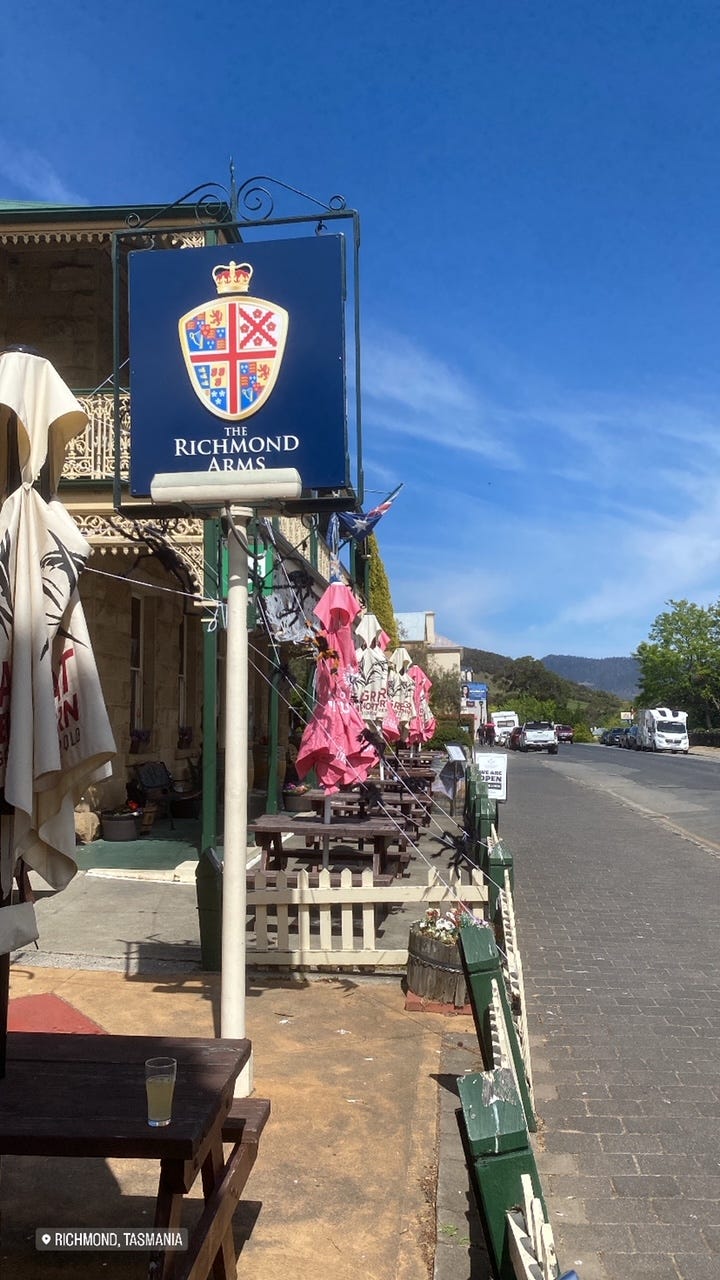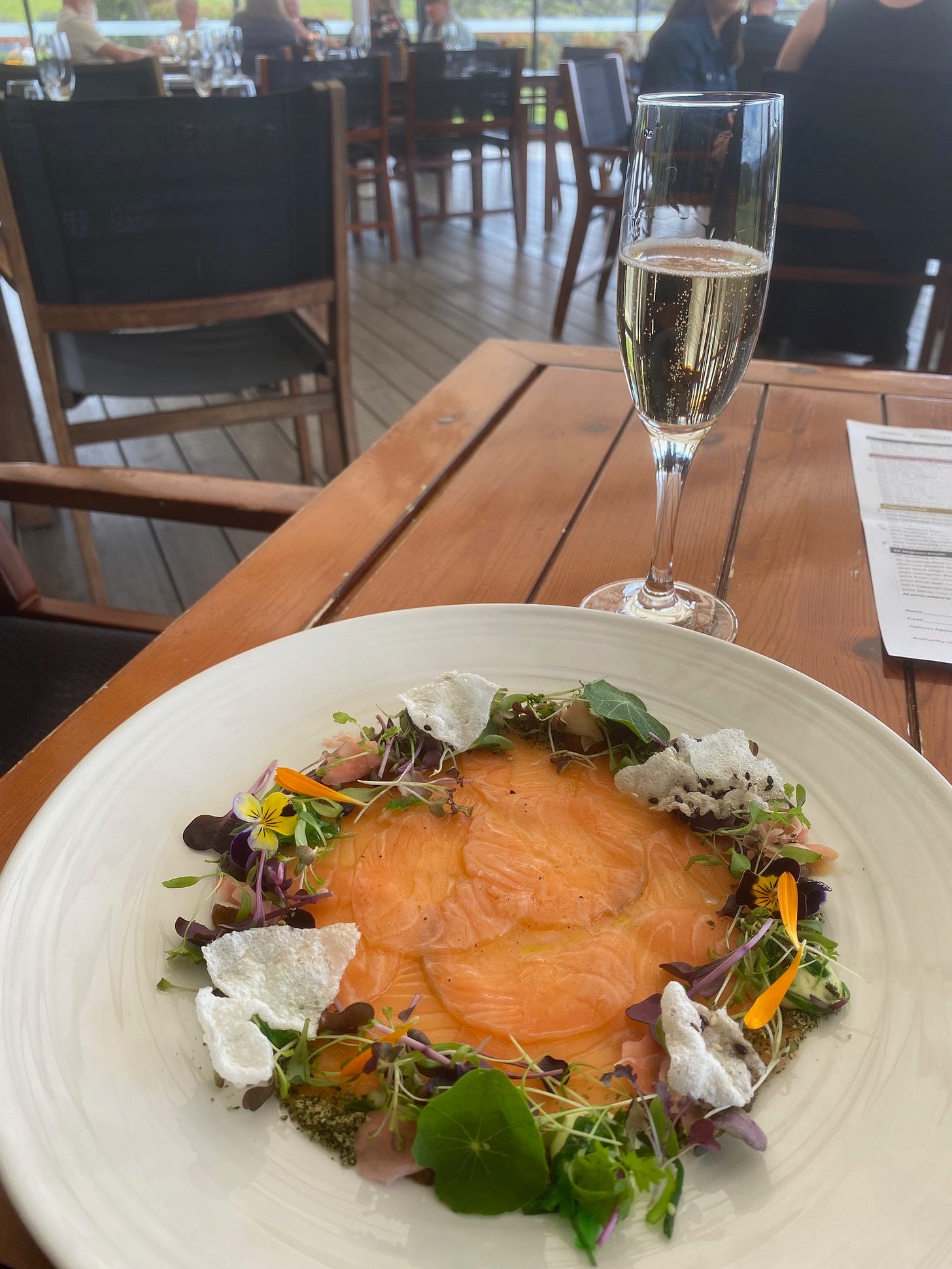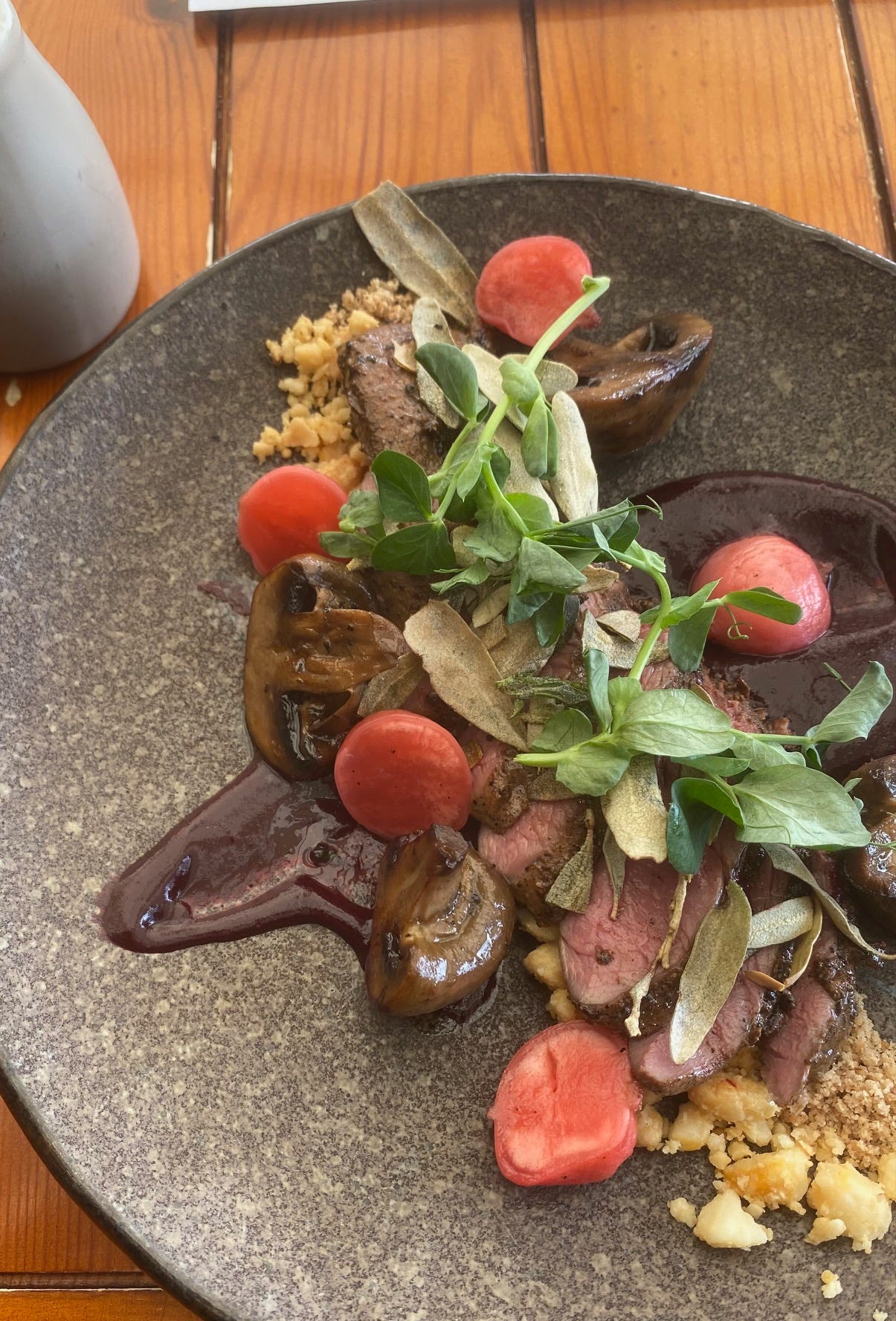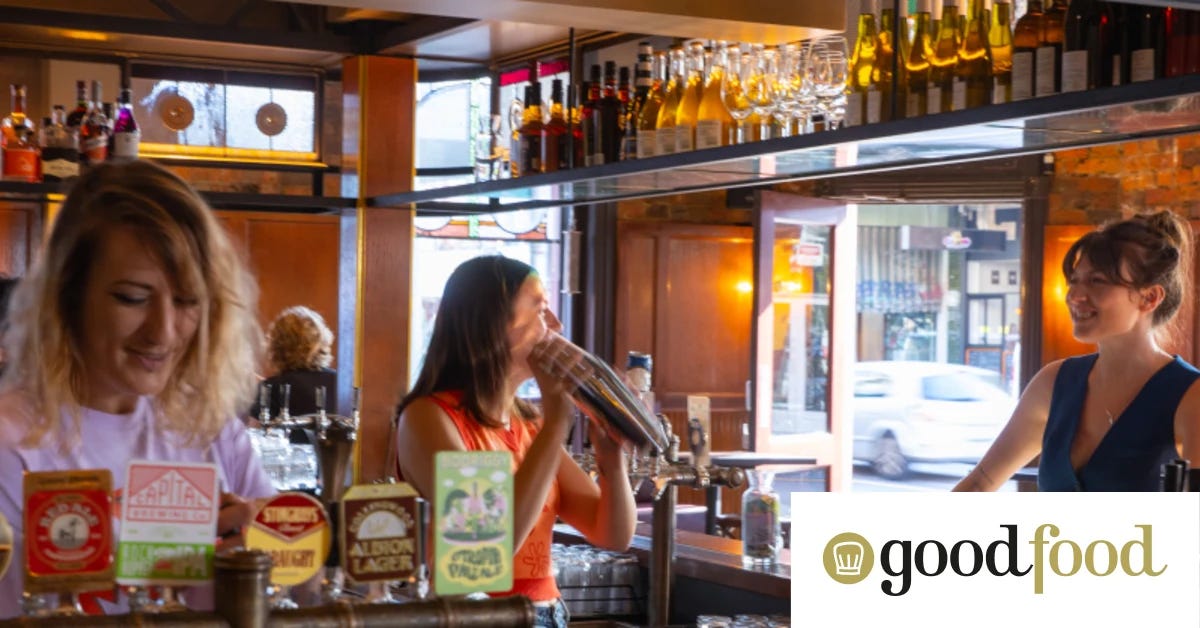On the Coal River Trail
Eating and drinking through Southern Tasmania's historic Coal River Valley
Every so often, like the last lurid flares fizzling from a dying star, an amusing tweet will appear on Elon Musk’s cursed cesspool app, X. It’s sad what’s become of this once mighty aggregator of the zeitgeist; to see such a monumental real-time social tool be reduced to to an algorithmic hate machine is a true tragedy of the modern times, but none the less, occasionally a ray of light shines through.
The above tweet struck a chord with me, as it’s particularly resonant now that I live in Hobart, a truly walkable city. I love my daily walk to work, down the hill from North Hobart, winding through the historical streets, always unearthing a new interesting spot to add to my to-do list. Hobart is eminently, incredibly walkable; almost every day I see a little cafe, bar or landmark that I’ve been meaning to try, and swiftly realise it’s about 20 minutes walk from my apartment. It’s quite a wonderful feeling.
None the less, every once in a while it’s restorative to escape the urban sprawl, and after a particular intense fortnight of work, I prescribed myself a day in the country. It's one of Hobart’s true selling points; a modern city with the amenities of any other major metropolis, that is genuinely a 10 minute drive from the countryside. A sort of mental health pastoral parachute, if you will.
Tasmania has many and sundry abundant areas ripe for your tourist dollar, but one of the most convenient is the Coal River Valley. Around a half hour drive from the city, this is where a lot of the island’s major food and wine producers are based. Wineries like Frogmore Creek and Puddleduck have their vineyards here, and heavy hitting whisky distilleries like Lark, Killara and Sullivans Cove, among others, distill in this region. It’s all very Cotswolds-y, quaint, and beautiful.
Richmond, and its charming cobblestoned streets, is our first stop. The iconic Richmond Arms hotel is a rite of passage for visitors in the area; a warm, grand hug from an older relative who’s a little smelly, but you’re always happy to see. Beer enthusiasts, don’t expect to see much by way of innovation on the taps here, and the menus keeps it simple with pub classics. On a stunning clear day, I’m opting for a pot of Plenty Cider’s Hazy Apple, a tart and complex cider with the hoppy, tropical notes of an IPA. It’s clean and delicious, a prevailing theme in the Tasmanian cider scene, where breweries like Willie Smith’s, Spreyton, and Pagan take advantage of The Apple Isle’s, well, apples.
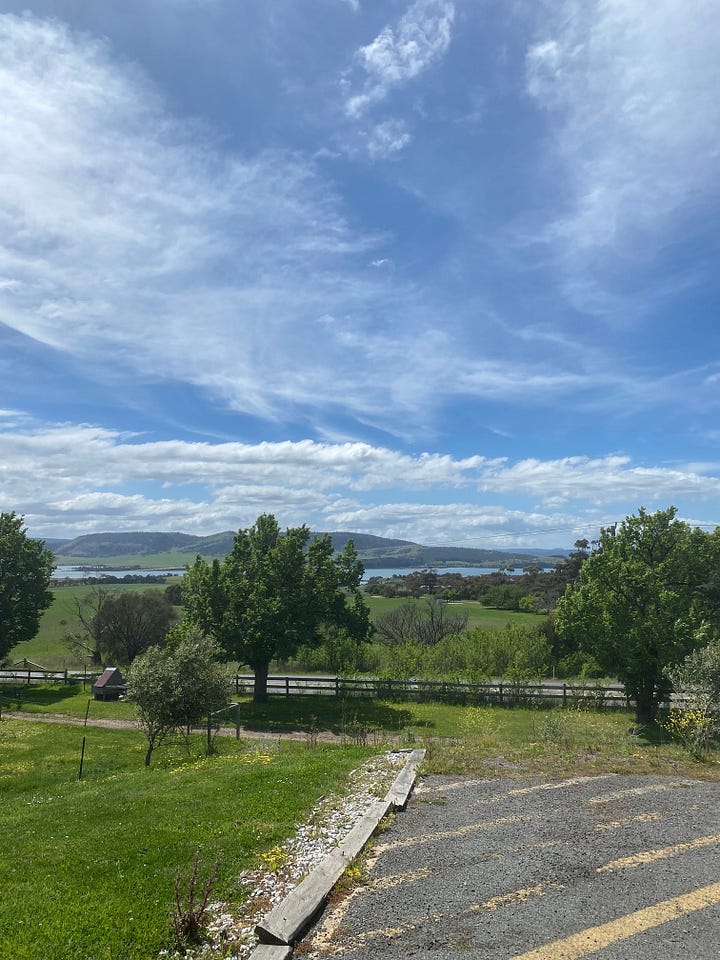
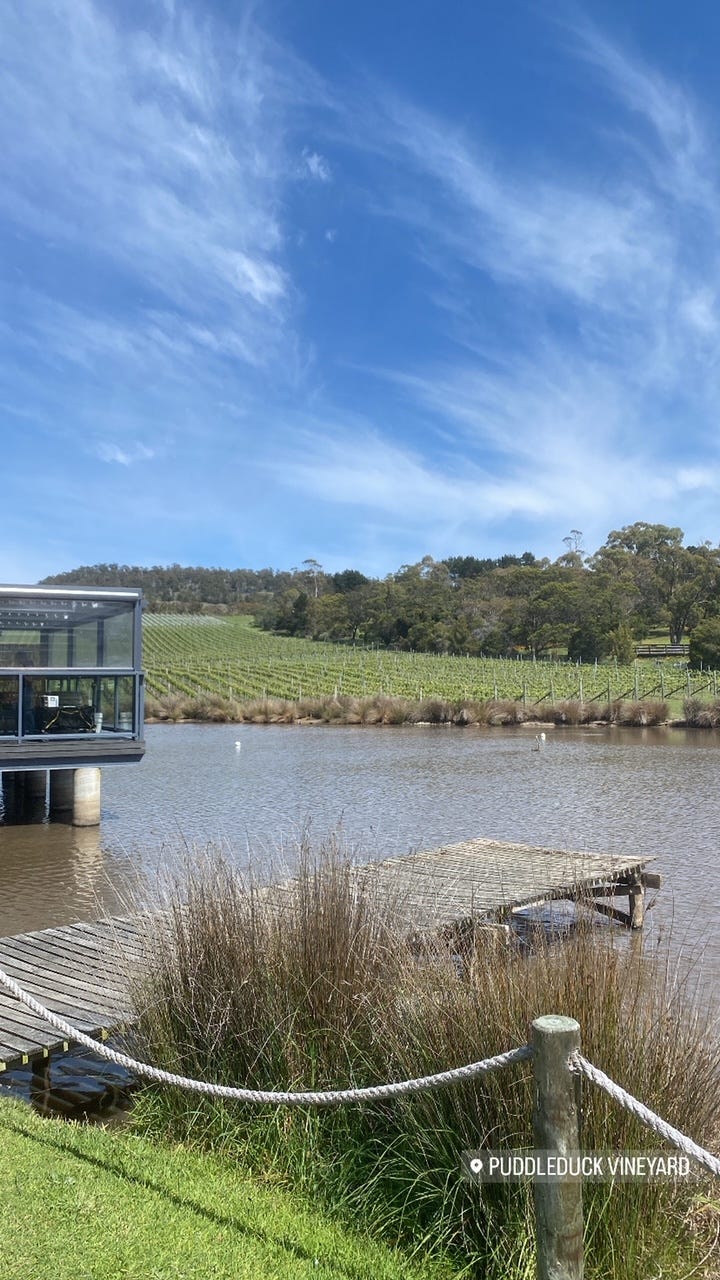
A pitstop at Puddleduck’s charming vineyard cellar door is next. Perched on a hill, and adjacent to a gorgeous duck-filled pond, this is a lovely, comfortable stop-off for road tripping families. An approachable and affordable grazing menu keeps the parents occupied while the kids feed the ducks, and tastings and vineyard tours are also reasonably priced. The perfect wholesome day out.
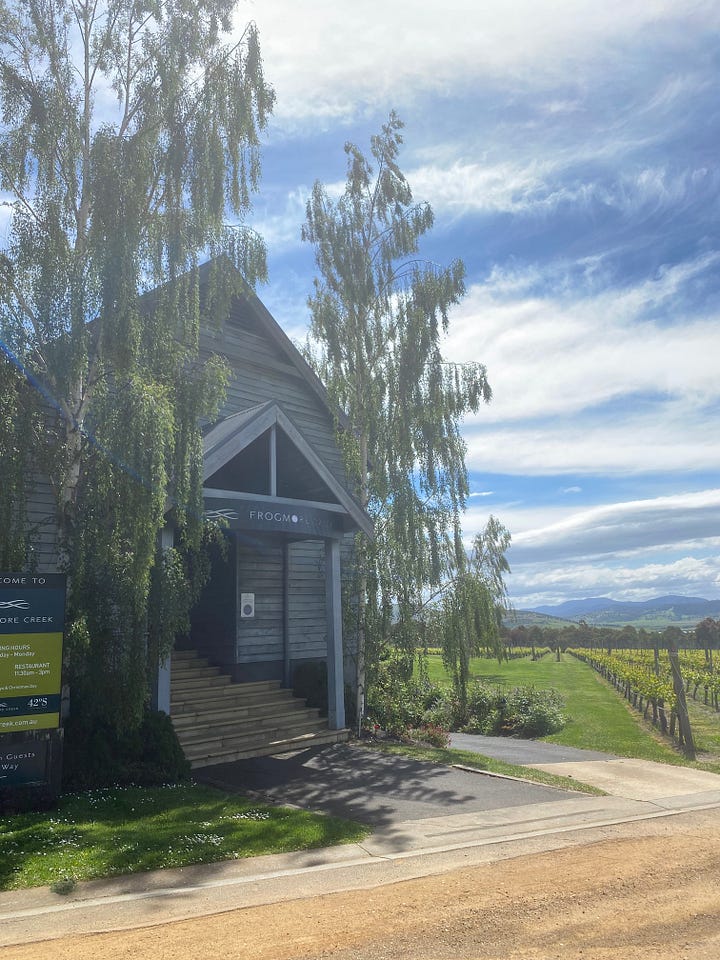
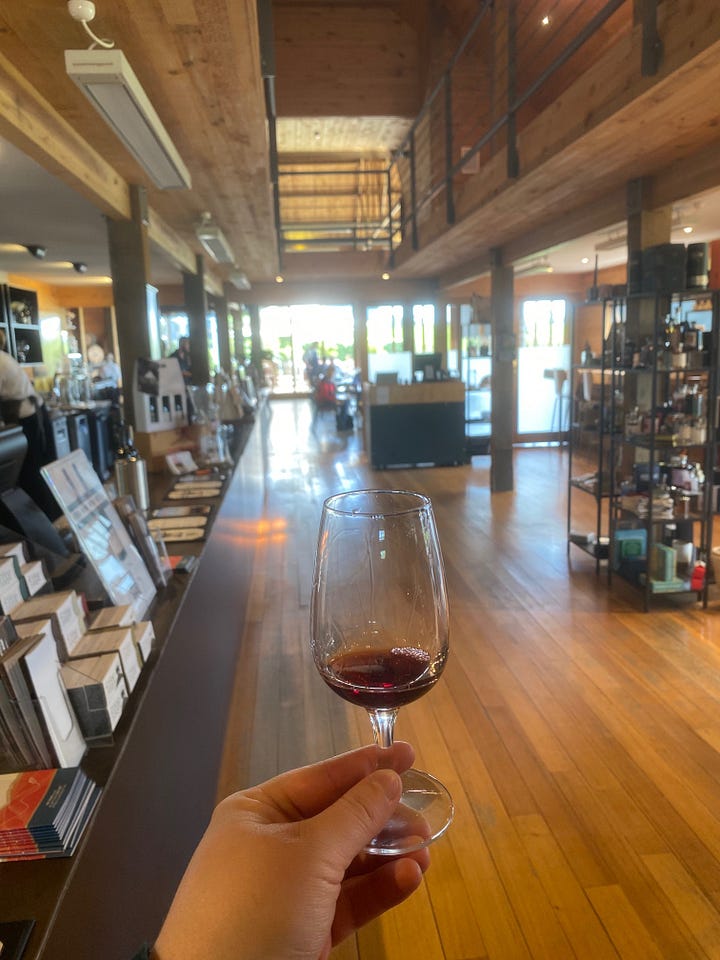
Up the road is the grand old dame of the valley, the imperious and majestic Frogmore Creek. Frogmore is something of an icon on the island, renowned for their world class cold climate wines and the largessse of its cellar door and restaurant. The view from the restaurant is almost offputtingly beautiful; this kitchen could serve instant ramen and toast and still be worth a special journey. Luckily for me, the food is quite good.
To commence, a slender but sweet local scallop. Correctly caramelised on one side only, it had the pleasing textural contrast of cooked and raw, maturely dressed in a Thai-inflected salsa with lime and peanuts. I’m increasingly less bothered by “fusion” menus that jump from cuisine to cuisine, and while I did find Frogmore restaurant’s liberal traversal of cultures a tad naff, I feel their heart is in the right place. This was unoquivocally yummy.
To follow, a “ceviche” of Huon salmon with various accoutrements approximating the little tray of pre-packaged garnishes at your local takeaway sushi place. This was not a ceviche, nor was it a particularly thoughtful or balanced dish. What it was was a clean and competent presentation of some very high quality fish, and when complimented with a glass of Frogmore’s bright, saline and explosively fruity cuvee, a delicious thing to eat.
In my new home atop a hill in North Hobart, I am blessed to regularly see perfect, handsome little wallabies munching shrubbery in my garden. It’s a daily delight; I marvel at their grace and goofiness, and will stop at nothing to protect them from harm. With that being said, wallaby meat is an ethical and sustainable industry in Tasmania; supermarkets are stocked with wallaby meat, and it is highly nutriotous. I had no idea, however, of how delicious it was.
This nicely cooked piece of wallaby, rubbed in native pepperberries, has the gorgeous, clean texture of spring lamb. Far from being gamey or chewy, I found it incredibly sweet and delicious. Unfortunately, this dish was over-garnished, a pool of cassis gel perhaps erroneously poured to excess, largely drowning out the dish. I chose instead to eat around it, marvelling in a wonderful new protein experience.
Despite a few stylistic hiccups from the kitchen, I’d give Frogmore Creek a strong endorsement. The staff are well trained and passionate, and the wine being produced here is of the highest calibre.

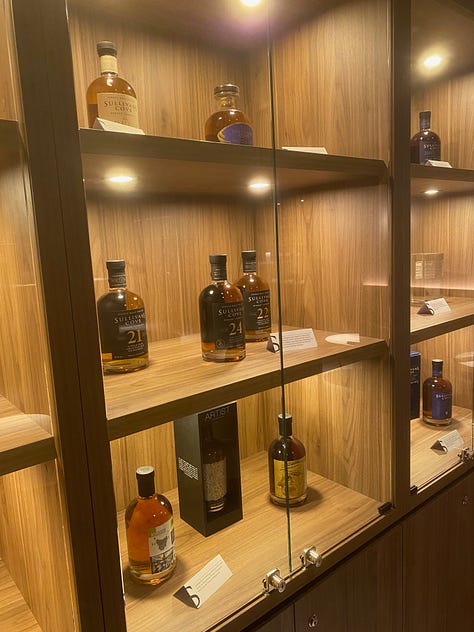

After lunch, a stop-off at Sullivans Cove’s recently renovated cellar door felt appropriate. Whisky fans will recognise the name; in recent years, Sullivans Cove has made the jump from small business made good to genuine luxury brand. Their entry level whisky retails at $250, and through scarcity, most bottle exceed the $500 mark. Favouring lighter, French-oak flavour profiles, this delicate dram has launched the distillery into international whisky nerd superstardom, and this futuristic space reflects that ambition.
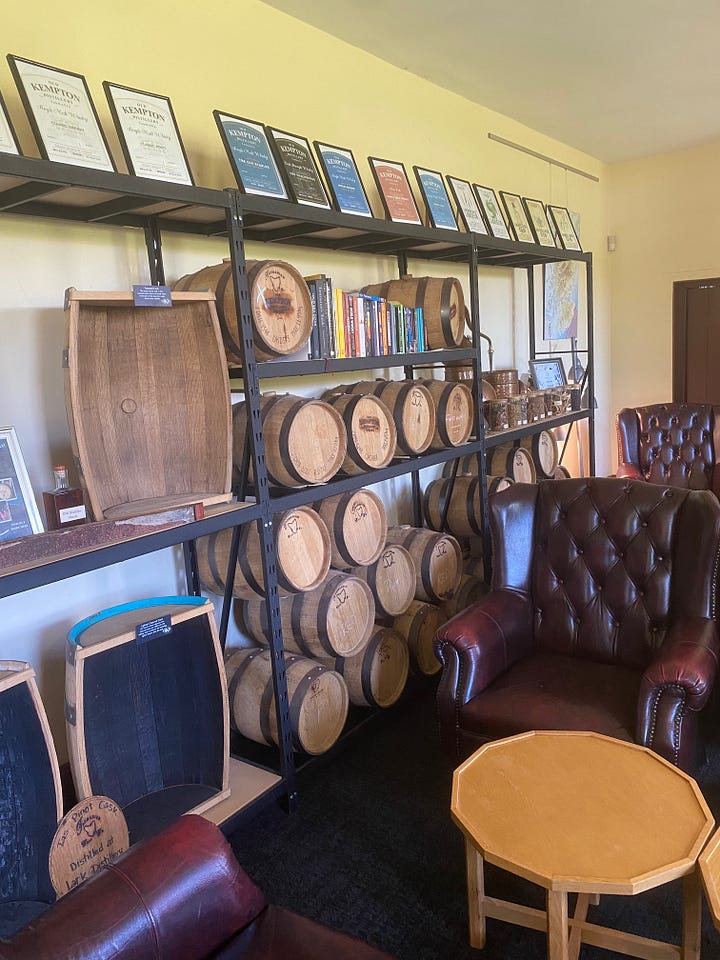
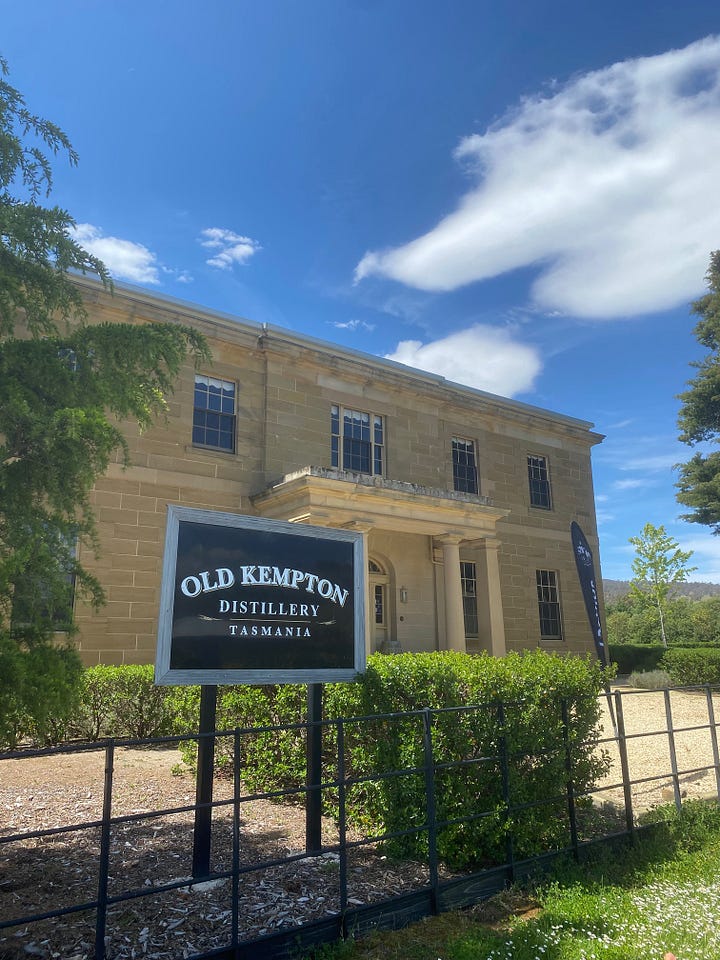
At the other end of the spectrum, the old fashioned charm of Old Kempton, about a 30 minute drive north from the valley, appeals to a more casual imbiber. Housed in a stately country manor, Old Kempton is one of the oldest operating distilleries in the (still relatively young) Tasmanian whisky industry.
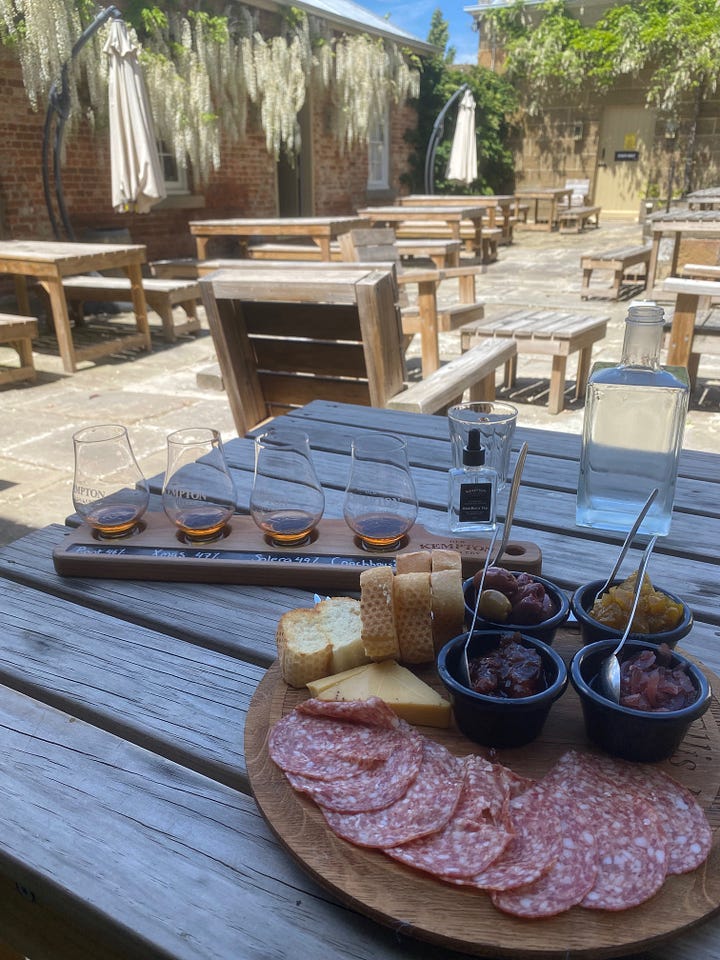
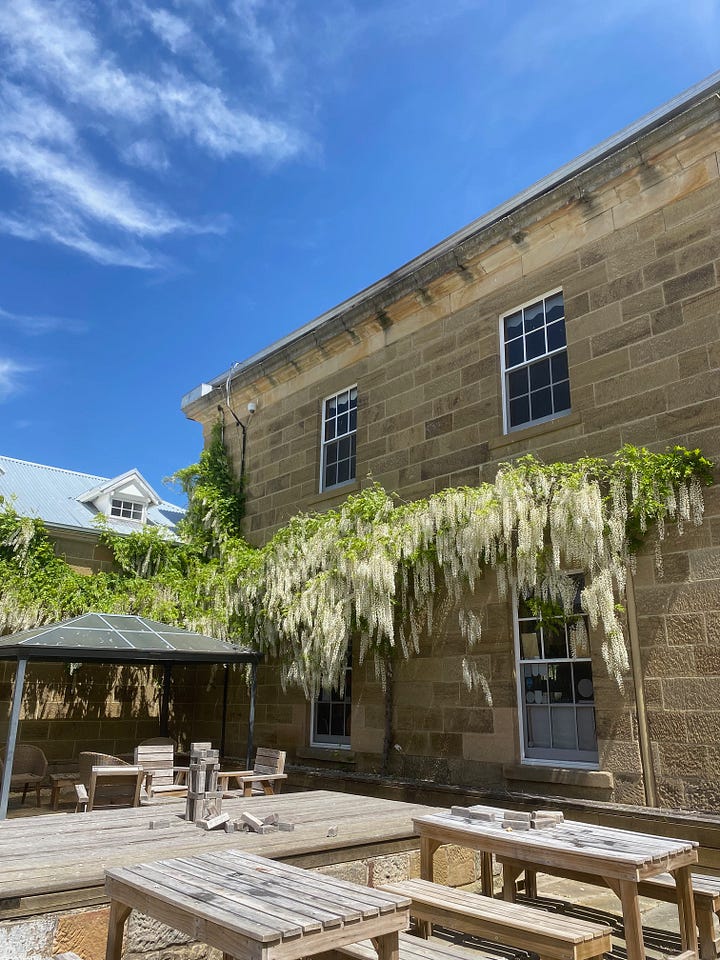
The vibe here is richer finishes; think fortified wines, vibrant sherries, and the plummy, darker tones they imbue. A tasting of four whiskies like this will set you back around $25, and an innovative (if somewhat overcompicated) “design your own charcuterie board” menu makes for happy snacking. My personal highlights from the Old Kempton range are the Classic Pinot cask, syrupy tannin-inflected toffee, and The Coachhouse Cask Strength, the sort of body-warming, all encompassing flavour bomb perfect for a Tasmanian winter night.
Bureau Goes Big Time
As a little added addendum, I was absolutely thrilled to see my words featured in The Age this past week. Longtime readers will know I grew up reading Good Food, and to see my name on a byline in the Fairfax font was a dream come true. You can read it here:

